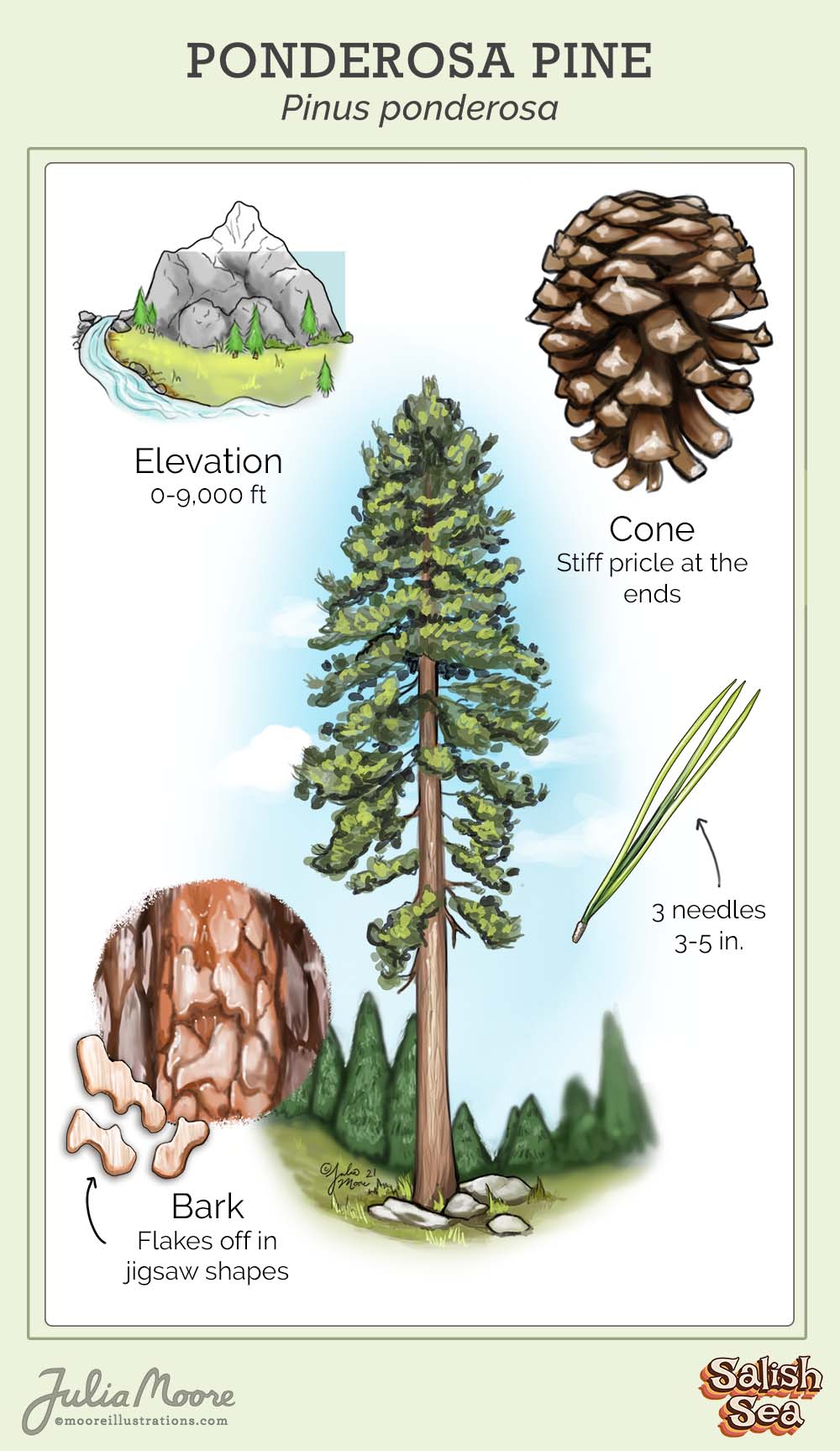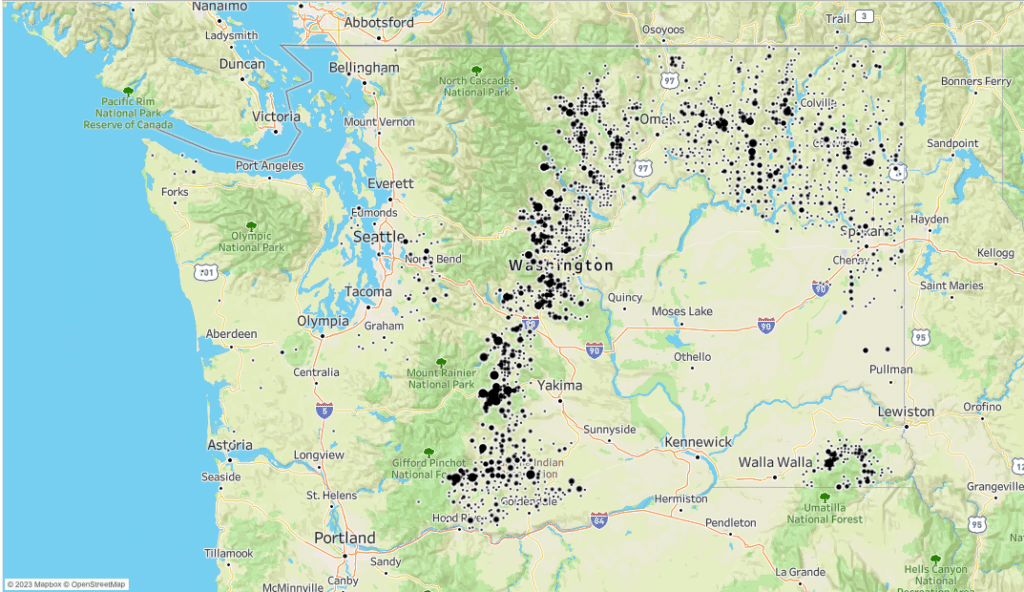Pinus ponderosa
Ponderosa pine has adapted itself to be able to thrive in dry environments, but can be found in a wide variety of locations. This tree seeks not to compete with other species, and grows more abundantly in low elevations.
It’s dominant roots can reach depths of six feet or more, making it strong against winds even in soft soil. According to a study in Washington, approximately 74% of fine Ponderosa pine roots were found to be infected with ectomycorrhizae in mineral soils at depths two inches or less (FEIS).

Distribution of Ponderosa Pines in Washington state
Ponderosa Pine (Pinus ponderosa) has a notable presence in Washington State, predominantly occupying the eastern and central regions. These trees are well-adapted to the drier, more arid climate found on the eastern side of the Cascade Range. Ponderosa Pines are less common in the western part of the state, which is characterized by a wetter, cooler climate.

